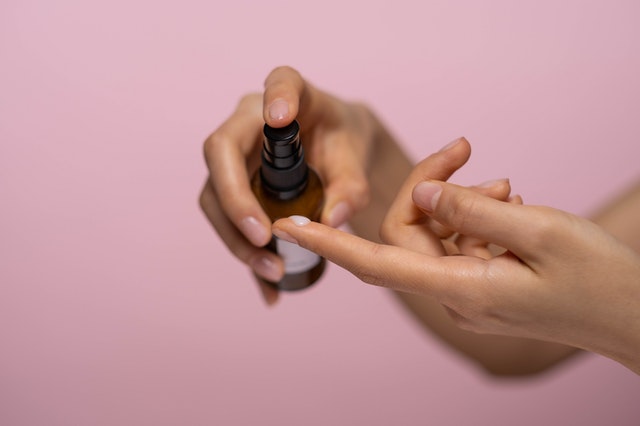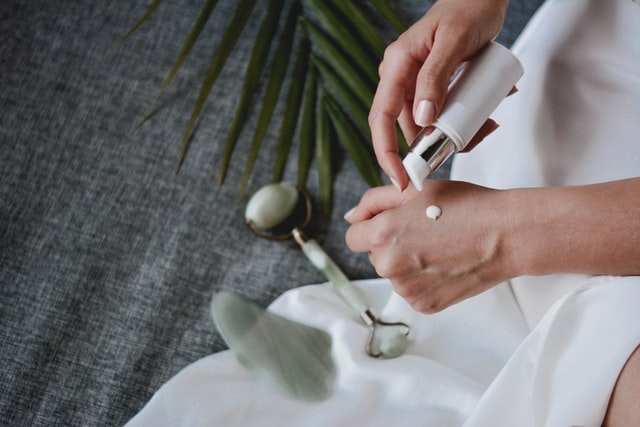Cleopatra reportedly used to bathe in a tub filled with donkey milk to maintain her skin’s luxuriant softness and radiance. Unless you have a willing donkey or goat, this ancient beauty ritual might not be practical for you. Fortunately, skincare routines have come a long way since 1st century B.C. Today, there are more convenient ways to maintain the health and beauty of your skin.
The skincare market is a $130 billion industry worldwide, with new products hitting store shelves every year. In fact, skincare products account for more than 40% of the cosmetics industry—the largest of its product segments. Both women and men of all ages use skincare products, and their interest continues to drive new product development. In the U.S., people have turned to online shopping to purchase skincare items from all over the world, as evidenced by the rise in popularity of K-beauty products and an influx of more skincare and cosmetics e-commerce stores.
Here, we’ll help you establish your own skincare routine so you can maintain the health and beauty of your skin.
Discover the Benefits of a Good Skincare Routine
Maintaining a skincare routine can help you keep your skin in the best possible condition. Skincare products can’t stop the aging process, but they may be able to help you slow down the visible signs of aging, such as the development of wrinkles. Plus, it’s much easier to prevent unwanted skin problems than to correct them once they occur. With a healthy skincare regimen in place, you can put your best face forward every day, and that may even lead to a terrific self-confidence boost.
Skin Types

There is a wide range of skincare products in the marketplace today, and many are designed for specific skin types. Skin types include:
Normal Skin
Normal skin is neither too dry nor too oily. It tends to feature a soft texture and requires no special care.
Dry Skin
Dry skin tends to feel tight and rough. It’s characterized by a lack of moisture and may be temporary (due to cold weather) or ongoing. In some cases, dry skin may involve a skin condition such as eczema.
Oily Skin
Oily skin is often associated with genetic or hormonal causes. Adolescents, for example, are prone to oily skin, which you can distinguish by a porous and bright skin surface.
Combination Skin
Combination skin is when the skin includes patches of oily skin and patches of dry skin. For instance, the cheeks may be dry while the skin on the forehead, nose, and chin is oily.
Sensitive Skin
Sensitive skin is skin prone to irritations that normal skin is not. For instance, when an allergen triggers a reaction, the skin might appear red, blotchy, and rough. Sensitive skin is also prone to itchiness and discomfort.
Today, many products are developed with these skin types in mind. When purchasing products, read labels thoroughly to ensure you’ll be using a formulation that’s ideal for your skin.
Some Ways to Determine Your Skin Type

Before purchasing skincare products, it’s crucial to determine your skin type to customize your regimen. For instance, oily skin doesn’t need moisturizing as dry skin does. Once you know your skin type, you can choose the best products. Try either of these two methods to identify your skin type:
Bare-Faced Method
The bare-faced method is simply studying your face in the mirror. Be sure there’s good lighting. If your nose, forehead, and chin appear greasy, you may have oily or combination skin. Check your cheeks. If they seem dry or chafed, you have a combination skin type. If they, too, are oily, your skin type is oily.
If the chin, nose, and forehead merely seem radiant and your entire face feels velvety, you have normal skin. On the other hand, if you identify rough, dry patches, you have dry skin. Sensitive skin is easy to identify because you’ve likely already experienced this type’s symptoms (redness, discomfort).
Blotting Sheet Method
If you’re still unsure about your skin type after using the bare-faced method, you can use the blotting sheet method. Apply a blotting sheet to your face and gently pat it. If the blotting paper picks up an excessive amount of oil in each area of your face, you likely have oily skin. If it picks up excessive oil in the T-section of your face (forehead, nose, chin) but not the cheeks, you likely have combination skin. If the blotting paper picks up very little to no oil, you likely have dry skin. If the paper reveals some oil (but not excessive or saturated), you likely have normal skin.
Morning Skincare Routine
Now that you know your skin type, you can purchase the ideal products for your routine. The following are the products most commonly used in a skincare regimen. Again, be sure to buy these products associated with your skin type, as many are created explicitly for normal, dry, sensitive, or oily skin.
Cleanser
A skin cleanser removes dirt and cosmetics from the skin as well as excess oil, dirt, and other pollutants. A gentle cleanser will help keep your pores clear and help prevent or minimize conditions like acne outbreaks.
Toner
Toner gives the skin a layer of protection after it’s clean. It helps tighten and close pores to block impurities from settling in, and it refreshes the skin without stripping away its moisture.
Serum
Serums are light liquids—either oil or water-based—that help prevent wrinkles and age spots. Typically, users apply them after the skin is cleansed and before a moisturizer is applied. Typically, you only need a couple of drops of serum for each use.
Eye Cream
Eye cream is a moisturizing product that specifically targets the eye area and is devised to help prevent fine lines and wrinkles.
Moisturizer
Moisturizers help prevent dry skin. They moisturize and lubricate the skin, increasing its soft, supple texture.
Sunscreen
Sunscreen protects the skin from harmful UV rays that can speed the aging process while guarding against sunburn.
Apply these products as directed on the product labels.
Nighttime Skincare Routine

Your nighttime skincare routine may involve similar steps as well as some additional ones, depending on your skin’s needs. A common nighttime regimen may include:
- Cleanser
- Toner
- Serum
- Eye cream
- Acne treatment (if it’s needed)
- Moisturizer
The primary difference between daytime and nighttime skin routine is their purpose. A daytime routine aims to protect and preserve the skin. A nighttime routine supports the skin’s health regeneration and helps resolve skin problems.
Holy Grail Skincare Accessories

When developing your skincare routine, take care to purchase some of the must-have items that will help you effectively care for your skin. Some holy grail accessories to keep on hand include:
Cleansing Tool
There are many skin cleansing tools on the market today. An effective tool helps you to gently clean and exfoliate the skin.
Headbands
Use a soft headband to keep your hair off your skin so you can easily apply your skincare products to your face.
Silicone Brushes
Silicone brushes are ideal for helping you exfoliate your skin for a deeper clean.
Jade Roller
With their use dating back to 7th century China, jade rollers are historic beauty tools. Roll the device over your face to help reduce puffiness and improve circulation.
Skin Care Fridge
A skincare fridge is a small cooling appliance that will keep the ingredients in your serums and creams stable and cool.
Gua Sha
The gua sha is a flat tool used to massage the face and stimulate circulation.
Tips From the Experts

When developing and putting your skin regimen into practice, consider a few expert tips:
- Be patient; results might take time.
- Invest in good-quality products; poor-quality products might not achieve the results you’re looking for. Read product reviews to determine what products have good reputations.
- Many people use DIY formulations (i.e., sugar, olive oil) as part of their skincare routine. Before attempting these formulations, discuss them with your doctor or dermatologist.
- When applying facemasks, use hydrating masks during the day and clarifying or exfoliating masks at night.
- When it comes to exfoliation, stick to only 2-3 times per week.
- Discuss your skincare regimen with a doctor to ensure that you’re using products that are ideal for your skin.
Maintaining a sound skincare routine can help you sustain or improve your skin’s health and appearance for the long term. Give it a try and see how your skin benefits after a month or so. If you’re not achieving the results you’d hoped for, consult with a skincare professional. Also, always purchase your skincare products from safe, reputable sources. Avoid untried, experiential formulations that could harm your skin.




